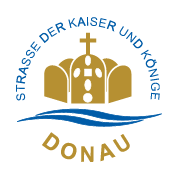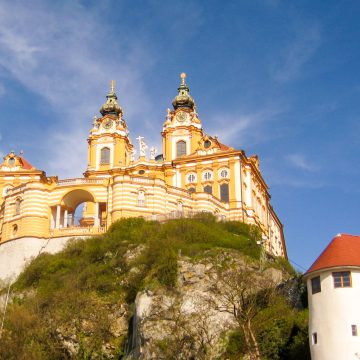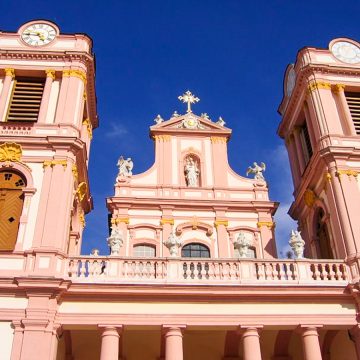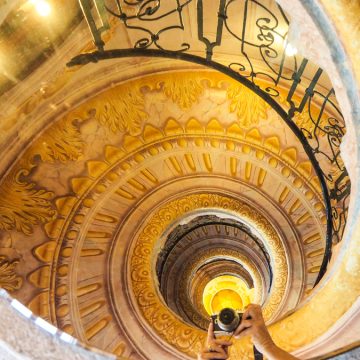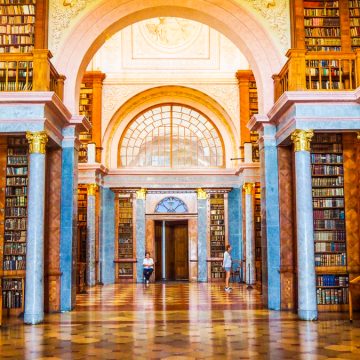Monasteries from Melk to Pannonhalma
The monastery as a tourism magnet
Charge an entrance fee to the Wachau, the UNESCO World Heritage Site between Melk and Krems? An entrance fee to travel through the river valley, to see the wine terraces, to stop at the Heurigen and take a boat trip, to visit the castles and monasteries? Even here in the Wachau, possible quotas of visitors are already being discussed, but: "Is it still going on?" one is tempted to exclaim boyishly at first. Yes, how long will it still go well with masses of visitors, short-term guests from the ships, bus guidance and individual traffic during the high season in the Wachau? At the time of the apricot blossom, the Wachau is virtually booked out at short notice, in summer it is full of excursion and river cruise guests, and in autumn there is mass cycling and hiking. The streams of visitors in the Wachau are "down on the Danube" at some times almost unmanageable. Bus groups, campers, individual culture tourists, cruise guests, cyclists - all meet in the narrow alleys of the villages, along and on the Danube.
A beautiful and protected natural and cultural landscape that is second to none - but who wants to pay extra for this pleasure?
Equally busy are the great monasteries of Melk and Göttweig, two true tourist hot spots in the Wachau. Wait a minute. Monastery and hot spot, retreat and bus tourists, faith, retreat and selfie sticks? Does that go together?
Seems so, because: Why don't you drive up to Melk Abbey or Göttweig Abbey on a beautiful, clear autumn day, both of which tower so unmistakably and breathtakingly above the Danube and - look for a parking spot. Try to get through the groups of visitors from Europe and Asia, the groups from Holland, the campers from Germany and the US travelers who have just disembarked from the ship, to the ticket office. A pleasant, almost Babylonian-like confusion of languages, noisy visitors with badges with their first names pinned to their chests, colorful flags and headphones dominate the image of the two popular excursion monasteries here. Melk Abbey is probably the only monastery I have visited as an excursionist without encountering a single monk during my stay.
Austria's religious orders are an indispensable cultural factor in Austria, some even true tourist magnets, whose streams of visitors must be perfectly directed, so as not to have to say here too at some point: Attention, Overtourism - we must contingent. The churches, monasteries, libraries, music, autograph or art archives and museums open to the public with works of art from many centuries - these offer cultural added value for us travelers and are marketed accordingly by the monasteries, which are also commercial enterprises. For a long time now. Admont Abbey in Styria, for example, with the largest monastic library in the world, or Kremsmünster in Upper Austria with its Tassilo chalice - priceless cultural assets from our past are stored in our monasteries.
Those monasteries, abbeys and convents that have always been popular destinations in Austria can easily compete with other top sights in Austria. Melk Abbey recorded 540,000 visitors in 2017, topped only by the basilica in Mariazell with over 700,000 visitors. The museums of Klosterneuburg Abbey and Göttweig Abbey follow with 100,000 and 94,000 visitors, respectively (source: 2017 cultural statistics from Statistics Austria).
The Benedictine Abbey of Melk in particular is an extremely important factor for tourism in the Wachau region; incidentally, around 43 percent of visitors are "carted" up here directly from their river cruise to visit. When it comes to organizing tours, a monastery has to take care of mundane matters such as lock times, construction sites and rush hours, multilingual cultural education, the affiliated monastery high school and, above all: the preservation of the magnificent building with enormously high investments. Cultural programs and summer theater are already common sources of income. Nevertheless, the preservation and restoration of libraries and archives, baroque frescoes and gardens are almost impossible to finance in many places.
Thus, many monasteries are opening up to their visitors and to new sources of income - not only through their monastery museums and monastery stores. As support for us who need help: In thinking, in finding peace, in solving problems. By talking, praying or discussing with others. With yoga, walking or meditation. Pilgrimages for all, theme trails and meditation paths are offered - in Germany, some monasteries are already working with virtual reality experiences, such as the Benedictine monastery Corvey in Paderborn.
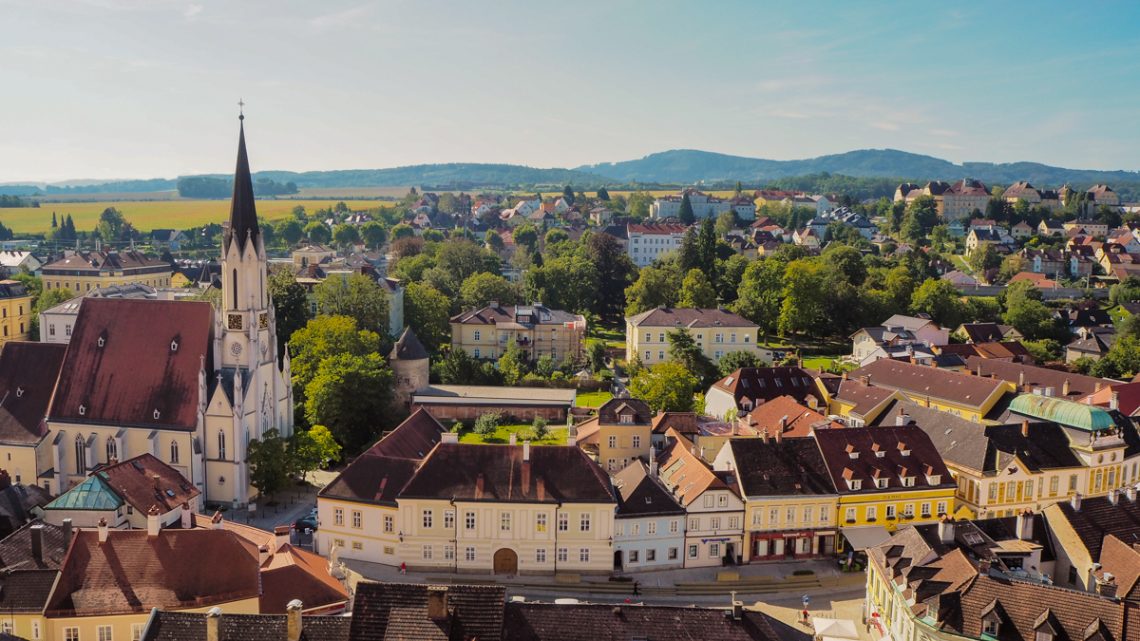
So many monasteries are opening up to a (new) audience: some monasteries have always done this because it is laid down in the rules of the order, while some have yet to find their way out. Also via social media. Stift Heiligenkreuz in the Vienna Woods, for example, is a pioneer in modern communication. The brothers have their own blogs, you can tweet along at masses, the brothers chant for CD recordings, have their own professional recording studio and a university on the monastery grounds. A monastery that doesn't need to worry about new blood.
"What are you looking for? What do you need?" these are the questions often asked by guests, pilgrims and retreaters in our many monasteries. Contemplation, retreat, detox - digital or fasting. The additional offers of many monasteries, in addition to library tours and museum visits, are becoming more and more suitable for everyday life. Monastery on time - that is still reserved for the men, but also for women the monastery gates are opened almost everywhere for the new offer: Yoga, fasting, herbal training and meditation. There is nothing that the monasteries along the Danube do not offer in some way. And "being a host" is not forgotten anywhere, stopping in is always possible: Most monastery guesthouses are always prepared for bus tourists and hungry families on Sunday excursions.
In the Lower Austrian Danube Valley with its excursion culture and the Wachau as a UNESCO World Heritage Site, as well as in Hungary, the monasteries have long been prepared for interested crowds of visitors and are used to dealing with large crowds and bus groups. Overtourism also in the monasteries? Sometimes yes.
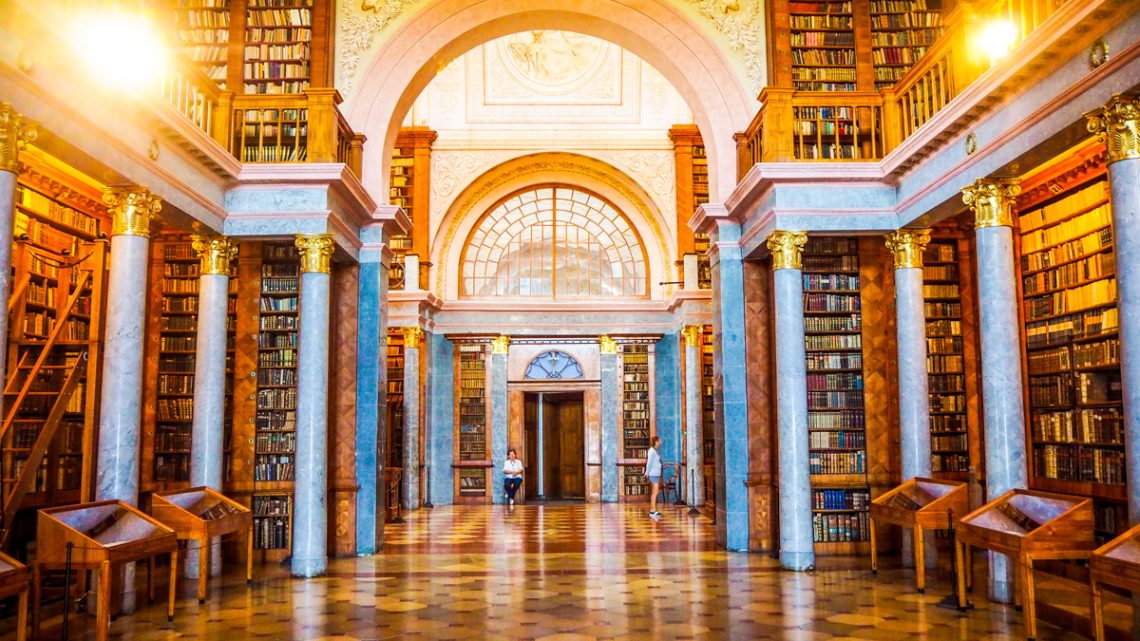
A culturally monastic foray through the Lower Austrian Danube Valley to Slovakia
The Danube Valley in Lower Austria in particular is home to some of Austria's best-known and largest monasteries, which are also the most visited. But also the Hungarian Benedictine monastery of Pannonhalma is already excellently prepared for crowds of visitors and organized in a modern way.
There is no way around it. The monastery is enthroned so breathtakingly beautiful on the old arm of the Danube and is also always a feast for the eyes when seen from the western highway. It's no wonder that bus tourists and visitors from the docking river cruise ships alike crowd the beautiful courtyards here as groups during the high season. Melk Abbey has - from a tourist point of view - a lot going on: Concerts, summer theater, special exhibitions, book presentations and the well-known event "Wachau in Echtzeit", organ music and matinées. However, these events only complement the actual reason for coming to Melk: the museum, the inner courtyards, the state rooms, the library and the beautiful abbey park as well as the high baroque abbey church. You should allow 2 to 3 hours for a visit, advises Melk Abbey. One or two selfies in the park are not enough.
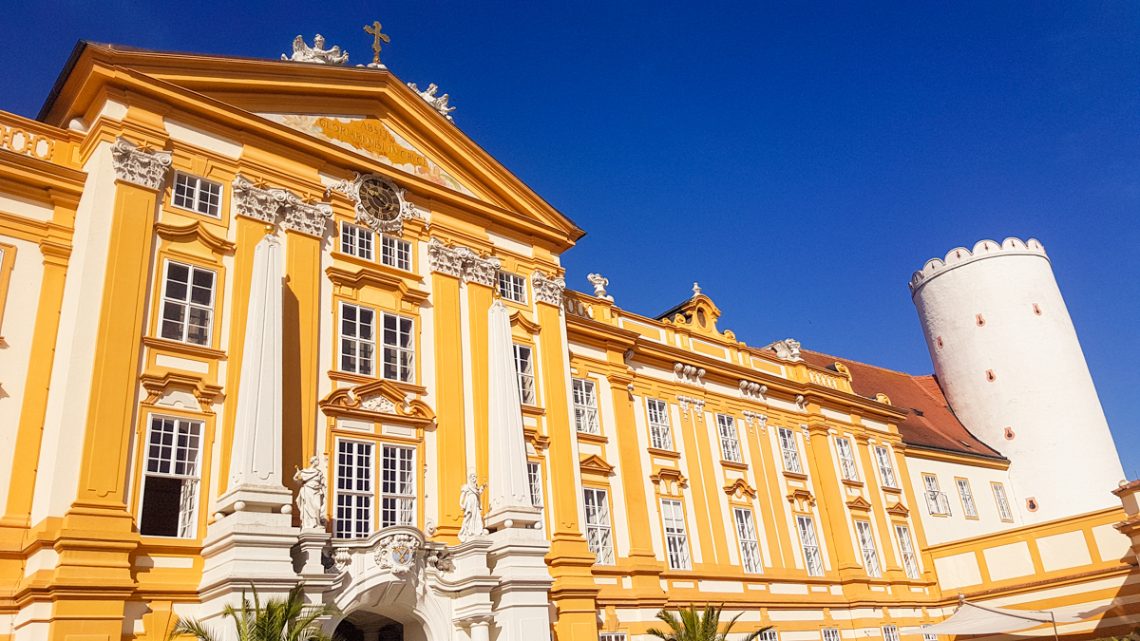
Just because monks live in seclusion doesn't mean they don't notice anything of the world," says the website of the Benedictine monastery high above the Danube - which is why people blog here. By the way, you can see it particularly well from the new Landesgalerie in Krems and its roof terrace. Culture and hospitality are equally in the foreground here when you step through the gate as a visitor. The museum in the Kaisertrakt, the special exhibitions, the monastery concerts and the collections - but also because of the monastery store and the great view - one comes up here to Göttweig. And one is rarely alone.
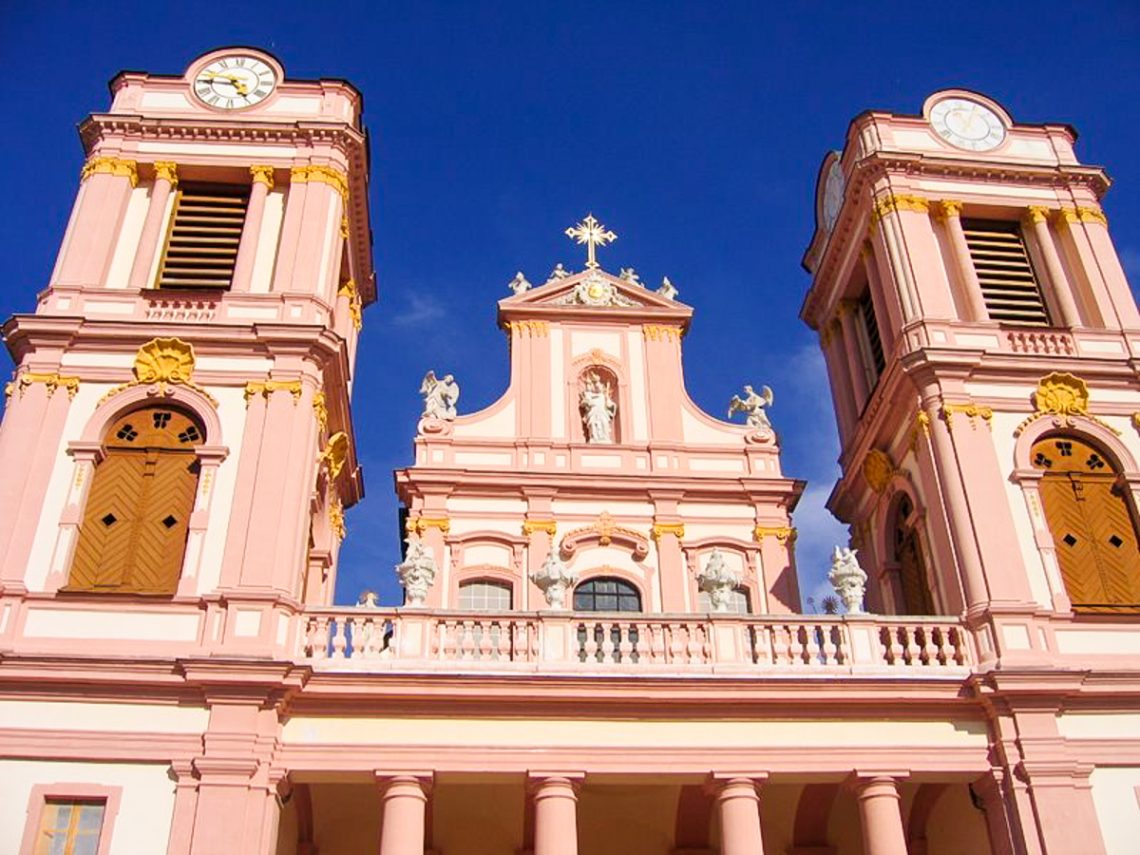
The Augustinian canons' monastery, which was once located under the Romans directly on the Limes. "Faith, wine, culture. Where heaven and earth meet" is the tourist tagline of the monastery, which has prepared its themed tours particularly well. A day ticket includes approximately all guided tours offered on that day including museum and parking ticket for 4 hours. Perfectly prepared for tourists, in my opinion. Special: A guided tour of Austria's oldest winery, Klosterneuburg Abbey. Out you come again - in the wine store with their own wines. Can worse happen.
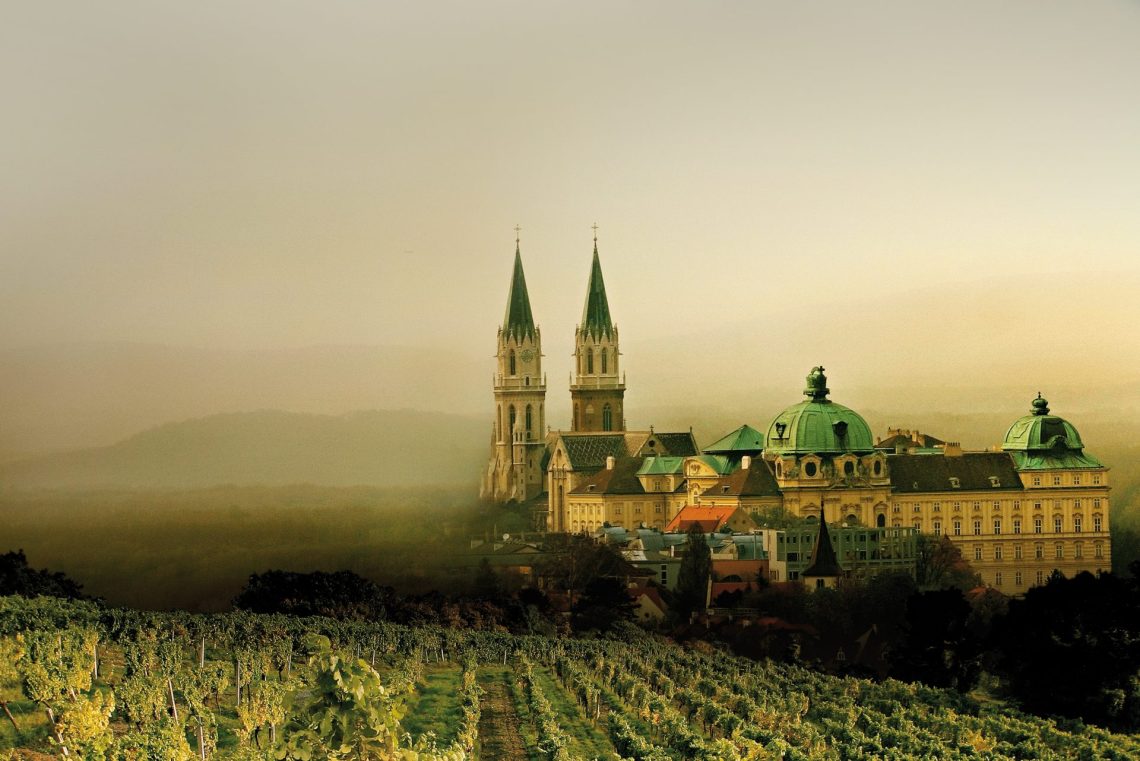
Stop at the monastery: inns, cafes and restaurants
- Abbey restaurant Göttweig: Enjoy with a view.
- Melk Abbey Restaurant and Café in the Pavilion: Modern and with a view.
- Stiftskeller Klosterneuburg: catering and celebrations.
- Pannonhalma Abbey Restaurant: Hypermodern inside and out. Great contrast.
- Kloster Und in Krems: Ingenious as a location.
- Klostergasthof Heiligenkreuz: The monastery's own dessert, the Cremeschnitte, is famous near and far.
Even more monasteries near the DONAU - excursion tips with culture
